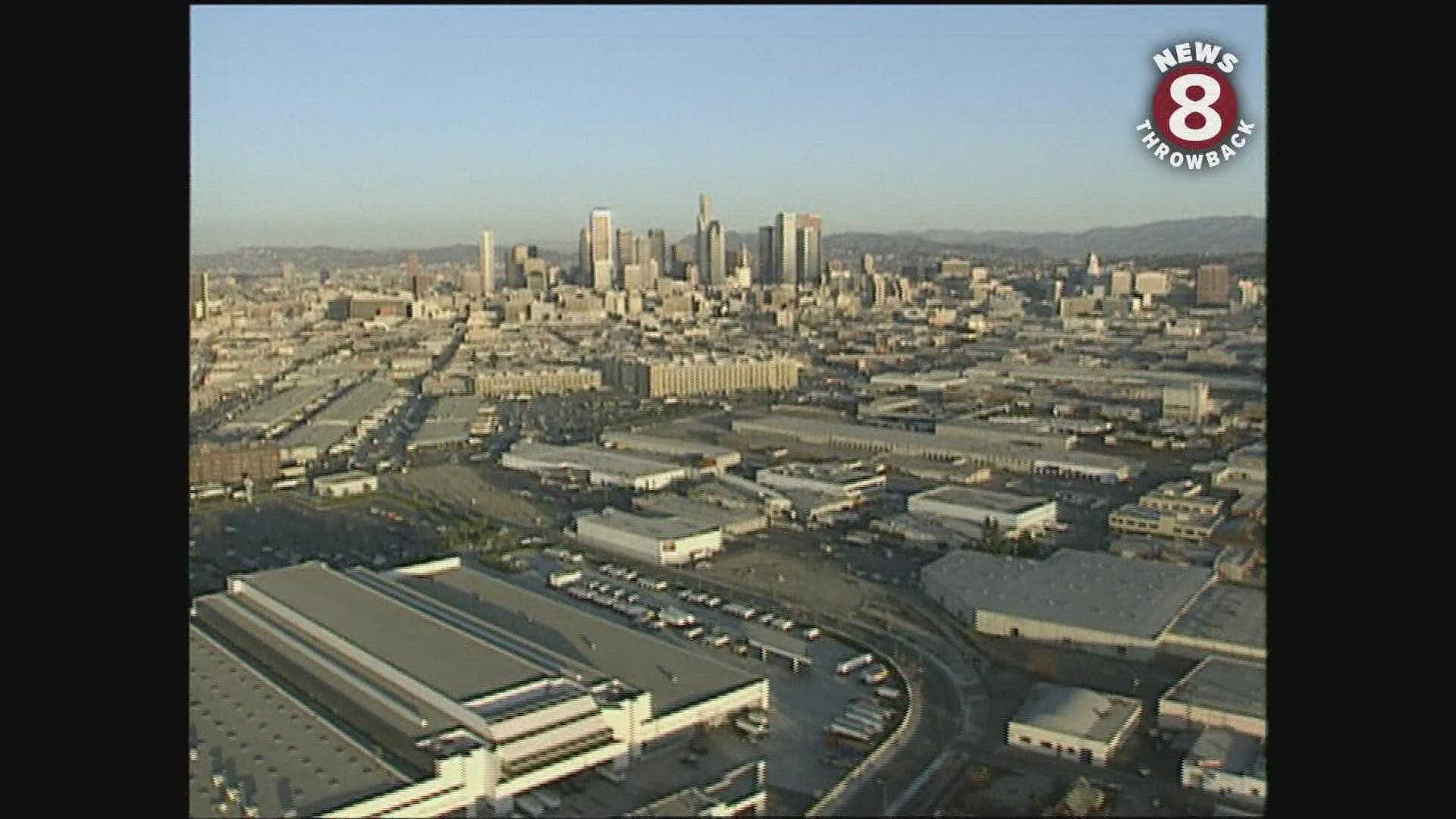SAN DIEGO — What would happen if a massive earthquake hit San Diego?
If a 6.9 magnitude quake happened along the Rose Canyon Fault, which mirrors the path the I-5 freeway takes from La Jolla to Downtown, it could cause an estimated $38 billion of damage with up to 800 deaths.
This exact scenario was analyzed in a 2020 report by the Earthquake Engineering Research Institute.
Such an earthquake would be tied for the 13th-strongest to ever hit California. The state's other 6.9M earthquake hit the Bay Area in 1989, causing up to $10 billion in damages, injuring 3,753 people and killing 63.
In fact, one 2015 study from the Southern California Earthquake Center said there is a 75% chance of a 7 magnitude earthquake hitting Southern California by 2045.
"We cannot predict earthquakes," said Dr. Pat Abbott, professor of geology emeritus at San Diego State University. "But geologically we are overdue for what we estimate to be a 7.8 magnitude on the Salton Sea."
However, if such a devastating quake were to hit the region, the damage would still be significantly less than what has just happened in Turkey. Back-to-back earthquakes — one a 7.8 magnitude and the other a 7.5 magnitude — have killed at least 11,000 people.
"California is not going to receive that same level of destruction," Dr. Abbott said. "I'm not saying we're going to experience destruction... but widespread collapse of buildings, no."
The 'Shake Table'
Why is California better prepared?
The West Coast has long dealt with rumors of "The Big One," a hypothetical massive earthquake that could occur along the San Andreas Fault.
But lesser magnitude earthquakes have still pummeled California over the years.
"One thing Californians have done very well is every time there's a big earthquake, we look and see where were the biggest problems," Dr. Abbott said. "So after every big earthquake, we have become better prepared."
One of the most innovative technologies helping better prepare the world is the University of California San Diego's "Shake Table" — the world's largest outdoor earthquake simulator. It opened in 2004, and is able to test how structures withstand conditions as powerful as that of the 6.7M earthquake that struck Northridge in 1994.
"Based on the conclusions from the research, building codes get updated," said Ioana Patringenaru, Public Information Officer with UC San Diego, adding that the technical data is publicly available.
One 2013 test actually led to improvements for "soft-story houses" in San Francisco and Los Angeles. Those houses are similar to the historic "Three Sisters" landmark in SF.
"The bottom floor is super soft and it pancakes in an earthquake. So what you want to do is find a way to brace and retrofit the bottom floor," Patringenaru said. "The test that we did here helped drive the effort to retrofit those kinds of homes."
A recent upgrade will help the "Shake Table" uncover a whole new wealth of data.
Last summer, the project reopened after a nearly $17 million upgrade that enables UCSD to recreate earthquake motions more accurately.
"It went from being able to do 1-D motion to 3-D motion," said Patringenaru, adding that it will no longer be limited to just going side-to-side or up-and-down — it can do both. "It can also do the motions that airplanes do, which is the roll, pitch and yaw motions."
While UCSD has already run a sample test on a small structure, they are gearing up for the first big test in early-April: a 10-story, cross-laminated timber building.
In fact, live cameras currently show the massive structure awaiting this test.
Tips for before, during and after
How can the average person protect themselves from such a strong earthquake?
The City of San Diego has published a list detailing what you can do before, during and after an earthquake.
Before:
- Identify safe spots in your home and eliminate hazards like unsecured items on walls.
- Prepare a disaster kit containing emergency water, food and supplies.
- Make sure everyone knows who to contact and where to go if you get separated.
During:
- If you are indoors, drop to the ground, cover your head and neck and hold on to the leg of a table or desk so it won't slide away from you.
- If you are outside, stay away from buildings, trees, streetlights and power lines.
- If you are in a vehicle, park away from those same objects and avoid bridges.
After:
- Check your home for damages and stop any fires or gas leaks that may have occurred.
- Wear long pants, long-sleeved shirts, sturdy shoes and work gloves to protect yourself from dangerous debris.
- Be prepared for aftershocks.
WATCH RELATED: Shake table tour


